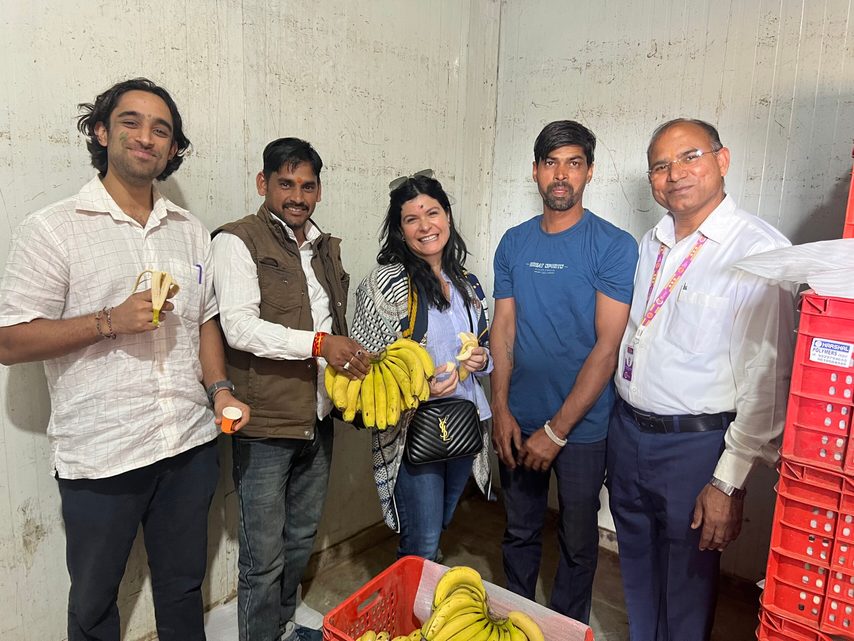For the last two decades, I have conducted grass-roots research across emerging markets. My aim is to dig deep to understand how consumer needs are evolving and how those often-underserved needs can translate into long-term investment opportunities. During my latest visit to India, I met companies and conducted vendor interviews. I ran focus groups with students, women and small business owners in Jaipur and Lucknow to further our understanding of rural consumption trends and the social and economic environment. Here are my takeaways.
The formalisation of India’s economy is accelerating
Government policy is accelerating formalisation1 across industries, with smaller non-compliant players being crowded out. The formalisation of the economy is set to boost the government’s coffers, via increased tax revenues.
Formalisation favours the largest established dominant industry players. As the biggest get stronger, and gain more market share, they also have scope for greater efficiency gains which, in turn, support growth and EPS (earnings-per-share) compounding.
A mixed consumption environment: premiumisation at the top but widespread disruption at the bottom
The wealthiest set of consumers are incrementally spending, providing a supportive environment for hotels, jewellery and food-delivery companies.2 However, digitalisation is lowering barriers to entry and disrupting traditional distribution moats, driving product innovation and testing consumers’ loyalty to established brands, which creates a challenging environment for traditional multinationals.
Infrastructure-led growth, private capital remains on the side
Following India’s general election, the results of which are set to be declared on 4 June, we could see some private capital expenditure (capex), but cash/excess capacity remains high. Broader consumption demand needs to grow in order to trigger additional private investments. Loan books are showing infrastructure-related capex, but private capital is on the side.
The trickle-down effect of greater infrastructure spending has benefited a number of small and medium-sized enterprises (SMEs) across the country. The momentum is strong, and the elections appear a safe bet, with Narendra Modi widely expected to secure a third term as prime minister. The regulator is conservative, which has led to a preventive pullback on consumer loans, but these represent only a small part of total loan books.
Giving the non-banked financial access could have a significant multiplier effect across emerging markets
Focus groups, with students, women and small business owners in Jaipur and Lucknow, demonstrated how digitalisation (the use of digital technologies to change a business model and provide new revenue and value-producing opportunities) and increasing access to financing are driving opportunities and aspirations across rural India.
In a village outside Jaipur, we met a banana wholesaler. Prior to getting access to loans, he would distribute his bananas on a pushcart. A vehicle-financing loan allowed him to start sourcing from multiple suppliers, and to expand his addressable market to several villages, rather than just one. Since the pre-Covid-19 period, when he had the pushcart, his sales have increased by ten times. He now distributes over 10 tonnes of bananas per month.

Giving the non-banked financial access could have a significant multiplier effect across emerging markets. By 2023, India had over 64 million micro, small & medium enterprises that collectively accounted for approximately 30% of the country’s GDP.3 There are, however, multiple challenges inhibiting their growth, such as limited digitalisation and difficulty accessing capital. This means that of the existing US$220bn credit demand, only $US53bn was injected into the markets through various lending channels, accounting for only 30% of the total addressable demand.4 In order to address this, smaller non-bank financial companies and small banks now seek to understand unbanked SMEs from a ‘boots on the ground’ perspective, rather than solely via data analytics. This means they are spending time with SMEs to understand their sales patterns and therefore what loan product is the best fit.
Digitalisation could spur social mobility
Digitalisation is unlocking intergenerational social mobility by providing access to education and job training. India’s female labour force participation rate has been among the lowest globally (at 24% – versus China/US/South Korea/UK, where rates range between 55% and 70%), which has stifled socioeconomic progress, particularly in rural India.5
We conducted focus groups in rural areas with women aged between 20 and 23. It was incredible to see the progressive mindset of these women in terms of the jobs they hope to secure, and how access to education through digital apps, such as YouTube and Facebook, is unlocking opportunities. Furthermore, recruitment services apps, such as job portals, are breaking the physical barriers of social mobility, by ensuring more equitable access to labour markets. We spoke to several women who hope to obtain jobs, either in government, law or teaching, and are using job portals to build their CVs and learn more about the skills they need to achieve their aspirations.
Sources:
1. WIEGO
https://www.wiego.org/rethinking-formalization
2. ICE360, Middle class brochure 2022,
https://www.ice360.in/app/uploads/2022/11/middle-class-brochure-2022.pdf
3. Brookings Papers, BPEA Conference Drafts, March 30-31, 2023
4. AU Small Finance Bank Integrated Annual Report 2022-2023
5. The World Bank
This is a financial promotion. These opinions should not be construed as investment or other advice and are subject to change. This material is for information purposes only. This material is for professional investors only. Any reference to a specific security, country or sector should not be construed as a recommendation to buy or sell investments in those securities, countries or sectors. Please note that holdings and positioning are subject to change without notice. Compared to more established economies, the value of investments in emerging markets may be subject to greater volatility due to differences in generally accepted accounting principles or from economic, political instability or less developed market practices. MAR006147 Exp 05/2029






Comments